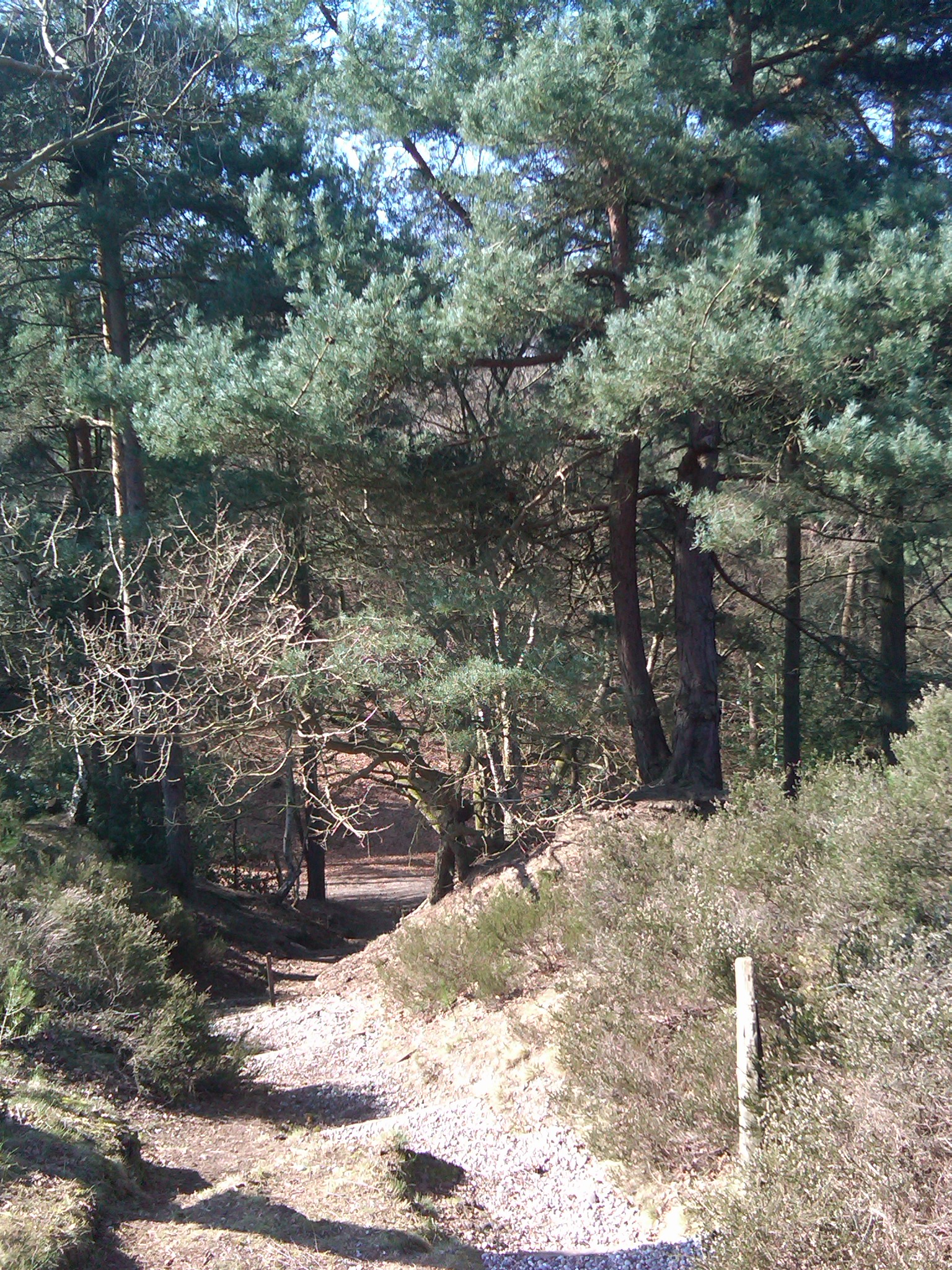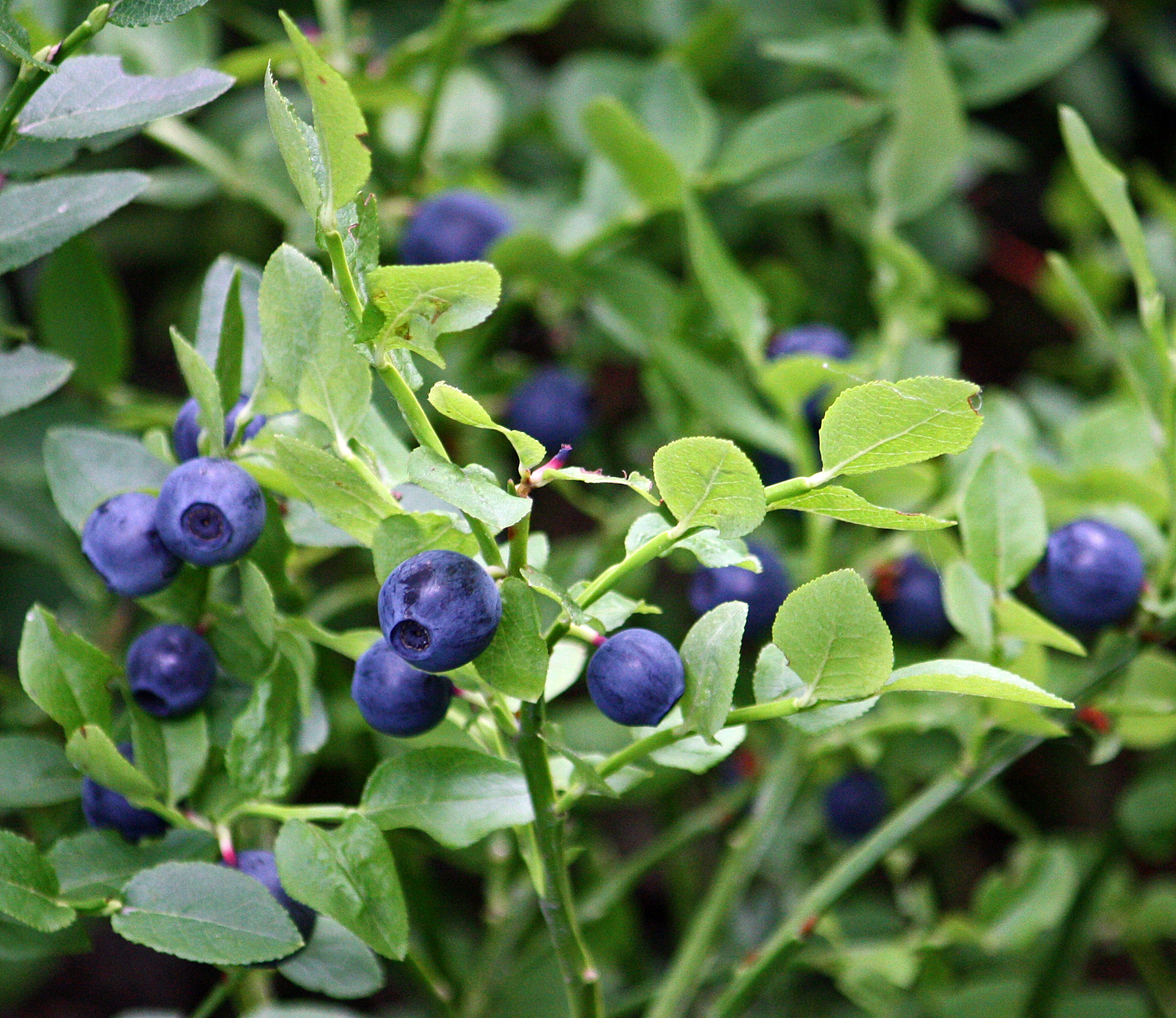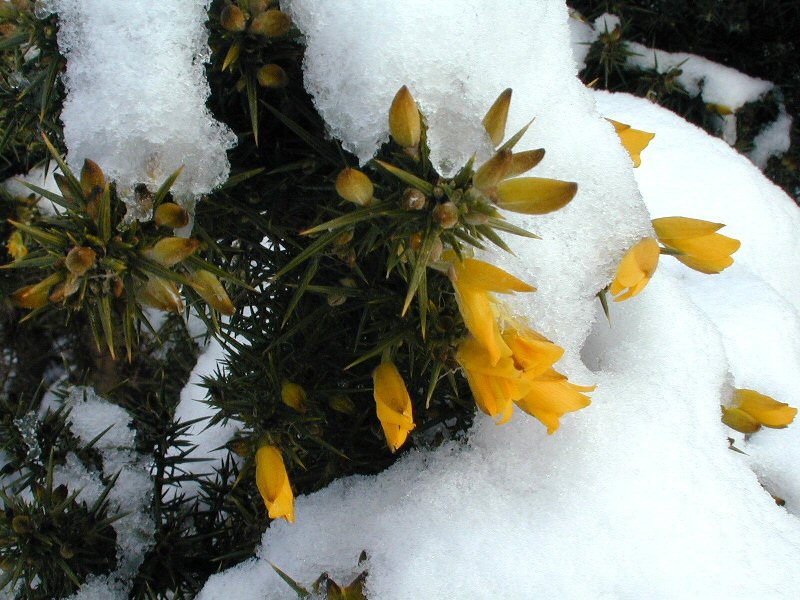|
Addington Hills
Addington Hills (also referred to as Shirley Hills) is a park in Upper Shirley, London, England. It is managed by the London Borough of Croydon. It was part of the old parish of Addington before the suburb of Shirley was developed in the 1930s. The site consists largely of woodland on a gravel bed, with London's largest area of heathland at its heart. It is a Site of Metropolitan Importance. In the mid-18th century, it was a noted cricket venue used by the then-prominent Addington Cricket Club. Addington Hills and Croham Hurst, a short distance to the southwest, form popular open spaces in Croydon. It is a peaceful area with many pathways, close to central Croydon. There is a viewpoint with fine views across Croydon and across to north London, including Docklands and Parliament Hill. It is served by Coombe Lane tram stop on the London Tramlink route to New Addington which runs along the southern edge of the land. The park covers an area of . The London Loop path runs th ... [...More Info...] [...Related Items...] OR: [Wikipedia] [Google] [Baidu] [Amazon] |
Shirley, London
Shirley is an area of south London, England, within the London Borough of Croydon. It lies north of Spring Park and Addington, east of Addiscombe, south of Monks Orchard and west of West Wickham, and 10 miles south-southeast of Charing Cross. Prior to the creation of Greater London in 1965, Shirley was in the administrative county of Surrey. The Shirley area is split into Shirley proper (centred on Wickham Road), Shirley Oaks (to the north) and Upper Shirley (to the west); the suburbs of Monks Orchard and Spring Park are sometimes also considered to be sub-districts of Shirley.Willey, Russ. ''Chambers London Gazetteer'', p. 439. History The name Shirley, first recorded in 1314, is thought to mean "shire clearing", referring to its position adjacent to the traditional Kent-Surrey border, though it may instead mean "bright clearing". It was long a small hamlet, with a large mansion (Shirley House) being built here in 1721; this was purchased by the businessman and member of ... [...More Info...] [...Related Items...] OR: [Wikipedia] [Google] [Baidu] [Amazon] |
Coombe Park
Coombe is a place in the London Borough of Croydon, situated south-east of central Croydon, between Addiscombe, Selsdon and Upper Shirley. Formerly a hamlet, since the growth of suburban development the area has become swallowed into the London conurbation and often does not appear on modern map. Coombe is located between the green spaces of Addington Hills, Lloyd Park, Ballards and Coombe Wood. It is unusual in this part of South London as it has barely been urbanised and has retained its collection of large houses fairly intact. Its rural character is maintained by the woodland aspect of the road and an old cattle trough at the junction of Coombe Lane and Oaks Road. Tramlink, however, runs through Coombe. Coombe Lane, the continuation of Coombe Road, is the principal road. Conduit Lane is an ancient unpaved route that is now a woodland path. There was an estate at Coombe as far back as 1221, recorded as being held by Richard of Coombe. The name comes from the Old English 'cu ... [...More Info...] [...Related Items...] OR: [Wikipedia] [Google] [Baidu] [Amazon] |
Wood Sage
''Teucrium scorodonia'', common name the woodland germander or wood sage, is a species of flowering plant in the genus ''Teucrium'' of the family Lamiaceae. It is native to Western Europe and Tunisia, but cultivated in many places as an ornamental plant in gardens, and naturalized in several regions (New Zealand, Azores, and a few locales in North America). Description ''Teucrium scorodonia'' reaches on average of height. It is a hairy herbaceous perennial with erect and branched stems. The leaves are petiolate, irregularly toothed, triangular-ovate to oblong shaped, lightly wrinkled. The inflorescence is composed by one-sided (all flowers "look" at the same side) pale green or yellowish flowers bearing four stamens with reddish or violet filaments. These flowers grow in the axils of the upper leaves and are hermaphrodite, tomentose and bilabiate but lack an upper lip, as all ''Teucrium'' ones. The flowering period extends from June through August. These plants are mainly poll ... [...More Info...] [...Related Items...] OR: [Wikipedia] [Google] [Baidu] [Amazon] |
Fescues
''Festuca'' (fescue) is a genus of flowering plants belonging to the grass family Poaceae (subfamily Pooideae). They are evergreen or herbaceous perennial tufted grasses with a height range of and a cosmopolitan distribution, occurring on every continent except Antarctica. The genus is closely related to ryegrass (''Lolium''), and recent evidence from phylogenetic studies using DNA sequencing of plant mitochondrial DNA shows that the genus lacks monophyly. As a result, plant taxonomists have moved several species, including the forage grasses tall fescue and meadow fescue, from the genus ''Festuca'' into the genus ''Lolium'', or alternatively into the segregate genus ''Schedonorus''. Because the taxonomy is complex, scientists have not determined how many true species belong to the genus, but estimates range from more than 400 to over 640. Fescue pollen is a significant contributor to hay fever. Taxonomy The genus ''Festuca'' represents a major evolutionary line of the tribe ... [...More Info...] [...Related Items...] OR: [Wikipedia] [Google] [Baidu] [Amazon] |
Bell Heather
''Erica cinerea'', the bell heather, is a species of flowering plant in the heath family (biology), family Ericaceae, native plant, native to western and central Europe. Description It is a low, spreading shrub growing to tall, with fine needle-like leaves long arranged in whorls of three. The flowers are bell-shaped, purple (rarely white), long, produced in mid- to late summer. The flowers are dry, similar in texture to the strawflower. Etymology The Latin Botanical name#Binary name, specific epithet ''cinerea'' means "ash coloured". Distribution and habitat ''E. cinerea'' is native to the west of Europe, where it is most abundant in Britain and Ireland, France, northern Spain and southern Norway. It also occurs in the Faroe Islands, Belgium, Germany, north-western Italy, and the Netherlands. It mostly occurs on moors and heathland with relatively dry, acidic, nutrient poor soils. It occurs in coastal dune heath and dune slack and occasionally in woodland. Ecology The pl ... [...More Info...] [...Related Items...] OR: [Wikipedia] [Google] [Baidu] [Amazon] |
Goldenrod
Goldenrod is a common name for many species of flowering plants in the sunflower family, Asteraceae, commonly in reference to the genus ''Solidago''. Several genera, such as ''Euthamia'', were formerly included in a broader concept of the genus ''Solidago''. Some authors treat ''Oligoneuron'', the flat-topped goldenrods, as a separate genus than ''Solidago'', while others consider it a section (botany), section: Solidago sect. Ptarmicoidei, ''Solidago'' sect. ''Ptarmicoidei''. Goldenrods can be used as a sustainable method to enrich soil with nitrogen. With an increase of nitrogen levels, there can then be an increase of vegetative growth. Plants known as goldenrods include: *''Bigelowia'' spp., rayless goldenrods, 2 species native to the Southeastern United States *''Cuniculotinus gramineus'', Panamint rock goldenrod *''Euthamia'' spp., flat-topped goldenrods or grass-leaved goldenrods, 5 species native to North America *''Gundlachia triantha'', Trans-Pecos desert goldenrod ... [...More Info...] [...Related Items...] OR: [Wikipedia] [Google] [Baidu] [Amazon] |
Bilberry
Bilberries () are Eurasian low-growing shrubs in the genus ''Vaccinium'' in the flowering plant family Ericaceae that bear edible, dark blue berries. They resemble but are distinct from North American blueberries. The species most often referred to is ''Vaccinium myrtillus'' L., but the term describes several other closely related species. Etymology and regional names The name "bilberry" appears to have a Scandinavian languages, Scandinavian origin, possibly from as early as 1577, being similar to the Danish word ''bølle'' for whortleberry with the addition of "berry". In Scandinavian languages, terms for bilberries have names that carry the meaning "blueberry": e.g. ''blåbär'' in Swedish and ''blåbær'' in Danish and Norwegian. The bilberry (especially ''Vaccinium myrtillus'') is generally known as blaeberry in Scottish and Northern English regional dialects, and whortleberry in southern England. Description Bilberries—which are native to Europe—are dif ... [...More Info...] [...Related Items...] OR: [Wikipedia] [Google] [Baidu] [Amazon] |
Gorse
''Ulex'' (commonly known as gorse, furze, or whin) is a genus of flowering plants in the family Fabaceae. The genus comprises about 20 species of thorny evergreen shrubs in the subfamily Faboideae of the pea family Fabaceae. The species are native to parts of western Europe and northwest Africa, with the majority of species in Iberia. Gorse is closely related to the brooms, and like them, it has green stems, very small leaves and is adapted to dry growing conditions. However, it differs from the brooms in its extreme thorniness, the shoots being modified into branched thorns long, which almost wholly replace the leaves as the plant's functioning photosynthetic organs. The leaves of young plants are trifoliate, but in mature plants, they are reduced to scales or small spines. All the species have yellow flowers, generally showy, some with a very long flowering season. Species The greatest diversity of ''Ulex'' species is found in the Atlantic portion of the Iberian Peni ... [...More Info...] [...Related Items...] OR: [Wikipedia] [Google] [Baidu] [Amazon] |
Ericaceae
The Ericaceae () are a Family (biology), family of flowering plants, commonly known as the heath or heather family, found most commonly in acidic and infertile growing conditions. The family is large, with about 4,250 known species spread across 124 genera, making it the 14th most species-rich family of flowering plants. The many well known and economically important members of the Ericaceae include the cranberry, blueberry, huckleberry, rhododendron (including azaleas), and various common heaths and heathers (''Erica (plant), Erica'', ''Cassiope'', ''Daboecia'', and ''Calluna'' for example). Description The Ericaceae contain a morphologically diverse range of taxa, including Herbaceous plant, herbs, chamaephyte, dwarf shrubs, shrubs, and trees. Their leaves are usually evergreen, alternate or whorled, simple and without stipules. Their flowers are Plant sexuality#Individual plant sexuality, hermaphrodite and show considerable variability. The petals are often fused (sympetalous ... [...More Info...] [...Related Items...] OR: [Wikipedia] [Google] [Baidu] [Amazon] |
Dartford Cricket Club
Dartford Cricket Club is one of the oldest cricket clubs in England with origins which date from the early 18th century, perhaps earlier. The earliest known match involving a team from Dartford took place in 1722, against London, but the club's own website says it was formally established in 1727. , Dartford Cricket Club. Retrieved 2017-11-28. The club is still in existence and now plays in the Kent Cricket League. History Dartford players were reckoned byRobert Harley, Earl of Oxford
[...More Info...] [...Related Items...] OR: [Wikipedia] [Google] [Baidu] [Amazon] |
London Cricket Club
The original London Cricket Club was formed in 1722 and was one of the foremost clubs in English cricket over the next four decades, holding First-class cricket#Important matches classification, important match status. It is closely associated with the Artillery Ground, where it played most of its home matches. Early history of London cricket The earliest definite mention of cricket being played anywhere is at Guildford in the 16th century and there can be little doubt that the game had reached London by that time. Even so, there is no written reference to the game in London until 1680.G. B. Buckley, ''Fresh Light on 18th Century Cricket'', Cotterell, 1935. A publication called ''The Post Man'' reported from 21 June 1707 to 24 June 1707 that "two great matches at cricket (to be) plaid, between London and Croydon; the first at Croydon on Tuesday, July 1st, and the other to be plaid in Lamb's-Conduit-Fields, near Holborn, on the Tuesday following, being the 3rd of July". No match ... [...More Info...] [...Related Items...] OR: [Wikipedia] [Google] [Baidu] [Amazon] |
1745 English Cricket Season
Events January–March * January 7 – War of the Austrian Succession: The Austrian Army, under the command of Field Marshal Károly József Batthyány, makes a surprise attack at Amberg and the winter quarters of the Bavarian Army, and scatters the Bavarian defending troops, then captures the Bavarian capital of Munich. * January 8 – The Quadruple Alliance treaty is signed at Warsaw by Great Britain, Austria, the Dutch Republic and the Duchy of Saxony. * January 20 – Less than two weeks after the disastrous Battle of Amberg leaves Bavaria undefended, the electorate's ruler (and Holy Roman Emperor) Charles VII dies from gout at the age of 47, leaving the duchy without an adult to lead it. His 17-year-old son, Maximilian III Joseph, signs terms of surrender in April. * February 22 – The ruling white colonial government on the island of Jamaica foils a conspiracy by about 900 black slaves, who had been plotting to seize control and to massacr ... [...More Info...] [...Related Items...] OR: [Wikipedia] [Google] [Baidu] [Amazon] |






